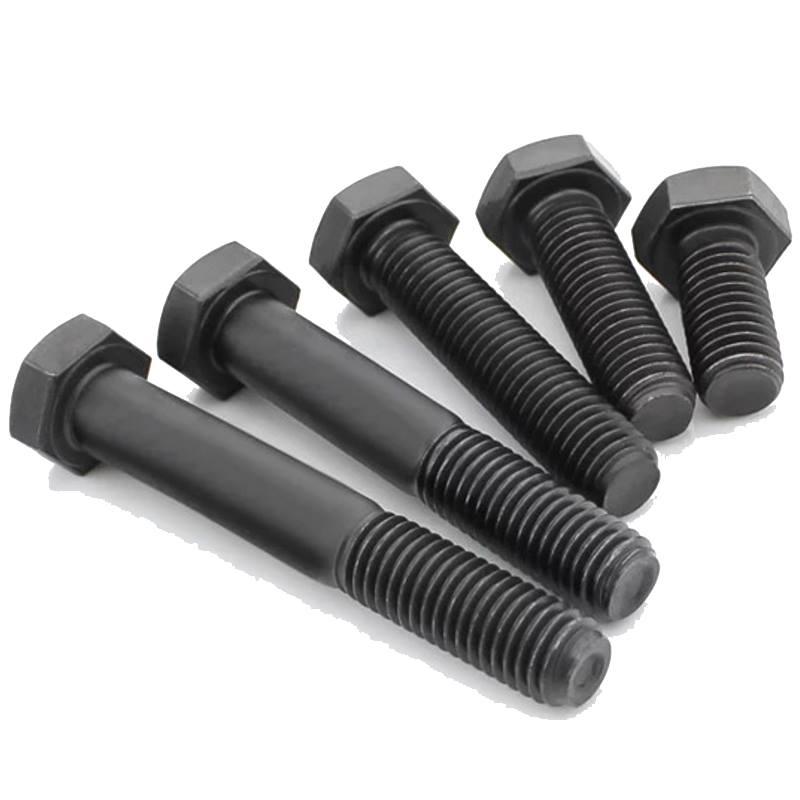stud bolt b7 factories
ጥቅም . 10, 2024 11:19 Back to list
stud bolt b7 factories
Understanding Stud Bolt B7 Manufacturing and Applications
In the world of mechanical engineering and construction, fasteners play a crucial role in assembling various components and ensuring structural integrity. Among the diverse range of fasteners, stud bolts have garnered significant attention, particularly the Stud Bolt B7. This article explores the characteristics, manufacturing processes, and applications of Stud Bolt B7, shedding light on why it is a staple in many industries.
What is a Stud Bolt B7?
A stud bolt is a type of fastener that consists of a long rod with external threads on both ends. Unlike traditional bolts which have a head on one end, stud bolts are typically used in applications where they can be inserted through two components and secured with nuts on both ends. Stud Bolt B7, in particular, is manufactured from a specific alloy steel known for its high strength and corrosion resistance.
The designation B7 refers to the properties defined by ASTM A193, a standard specification for high-temperature service bolts, nuts, and studs. Specifically, B7 stud bolts are made from an alloy steel with minimum tensile strength of 125,000 psi and yield strength of 105,000 psi. Their temperature resistance and strength make them suitable for high-pressure and high-temperature applications, such as oil and gas pipelines, power plants, and petrochemical facilities.
Manufacturing Process of Stud Bolt B7
The manufacturing of Stud Bolt B7 involves several critical steps, each designed to ensure high quality and strength
. Here is an overview of the typical manufacturing process1. Material Selection The first step involves choosing high-quality alloy steel that meets the ASTM A193 B7 specifications. This steel is often treated to enhance its mechanical properties.
2. Cold Heading The selected steel is then subjected to a cold heading process, where it is formed into a rough head shape if necessary, or simply drawn out to the required length. This process helps in achieving the desired grain structure, which contributes to the bolt's strength.
3. Threading Next, the stud is threaded on both ends to specifications. Precision threading is crucial, as it ensures proper fitting with nuts and other components. Techniques like rolling or cutting can be used for threads, depending on the desired tolerance and finish.
4. Heat Treatment To ensure that the stud bolts possess the requisite strength and hardness, they undergo heat treatment processes like quenching and tempering. This enhances their mechanical properties, making them suitable for demanding applications.
stud bolt b7 factories

5. Surface Finishing After heat treatment, the stud bolts are subjected to surface finishing processes such as shot blasting or plating. These processes remove impurities and increase corrosion resistance, extending the bolts' lifespan even in hostile environments.
6. Quality Control Finally, a rigorous quality control process is implemented. This involves testing for tensile strength, dimensional accuracy, and surface integrity. Only those studs that pass these tests are certified for use in critical applications.
Applications of Stud Bolt B7
Stud Bolt B7 finds its applications across several industries due to its high strength and reliability. Some of the primary uses include
- Oil and Gas Industry B7 stud bolts are extensively used in drilling rigs, refineries, and pipelines where high pressure and temperature are commonplace. Their durability ensures safety and performance in these critical areas.
- Power Plants In power generation facilities, especially those that operate at high temperatures and pressures, B7 stud bolts are used to secure various components of boilers and turbines.
- Chemical Manufacturing The chemical industry often deals with corrosive environments, making it essential to use fasteners that can withstand such conditions. B7 stud bolts are a preferred choice due to their corrosion resistance.
- Construction In large-scale construction projects, particularly in industrial and infrastructure settings, stud bolt B7 is utilized for creating secure connections between steel structures and assemblies.
Conclusion
Stud Bolt B7 exemplifies the critical role that high-strength fasteners play in modern engineering and construction. Its robust manufacturing processes and diverse applications underline its importance in ensuring safety and reliability in challenging environments. As industries continue to evolve, the demand for such specialized fasteners will likely grow, making Stud Bolt B7 a vital component in various applications.
Latest news
-
Reliable Axle Nuts Supplier | Quality & Precision Fasteners
NewsAug.23,2025
-
Durable Bolts for Lawn Mower Handle - Top Supplier & Manufacturer
NewsAug.22,2025
-
High-Quality Bolts for Lawn Mower Handle Supplier & Manufacturer
NewsAug.21,2025
-
Reliable Axle Nuts Supplier | High-Quality Automotive Parts
NewsAug.19,2025
-
Premium Wire Bolts Suppliers | Durable & Reliable Fasteners
NewsAug.18,2025
-
Leading Metric Wood Screw Companies & Manufacturers
NewsAug.17,2025
